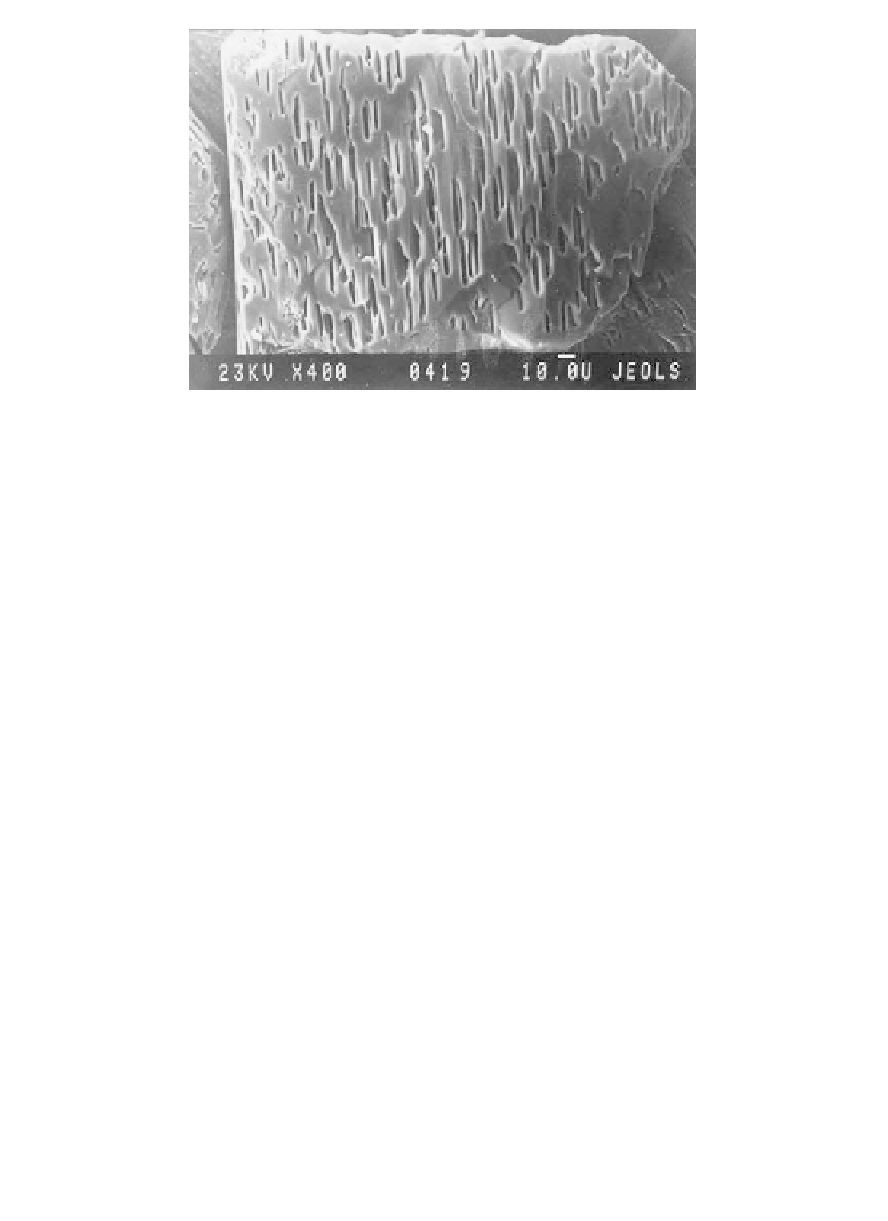Biomedical Engineering Reference
In-Depth Information
Figure 7.6
An example of etched crystal surface of natural FA with typical
hexagonal etch pits. Bar 10 μm.
In any case, after being formed, the pits were found to grow in
all directions (length, width, and depth—see Fig. 7.3) with definite
rates until they either covered all crystal faces of apatite (dissolution
of natural crystals [104-106]) or made longitudinal holes parallel to
the
-axis (dissolution of the single crystals of pure HA [97-102]).
However, according to “a new dissolution model incorporating
particle size considerations”, the dissolution process becomes
spontaneous only when the pits are reached the critical sizes [37-
43]. The unit-step movement of etch pit growth was suggested to
consist of removing of a single ion, followed by surface diffusion
away from the place of ionic detachment, desorption from the surface
and diffusion into the bulk solution. All these processes evidently
occur according to the basic findings of the ion exchange, chemical,
calcium-rich layer formation, hydrogen catalytic, and diffusion
controlled dissolution models.
To conclude this part, except the dissolution rates increasing and
surface etching, no other influences of dislocations on the dissolution
mechanism were found.
c
7.8
Conclusions
Thus, based on eight dissolution models drawn from the previously
published papers, an attempt to create the general description of

Search WWH ::

Custom Search